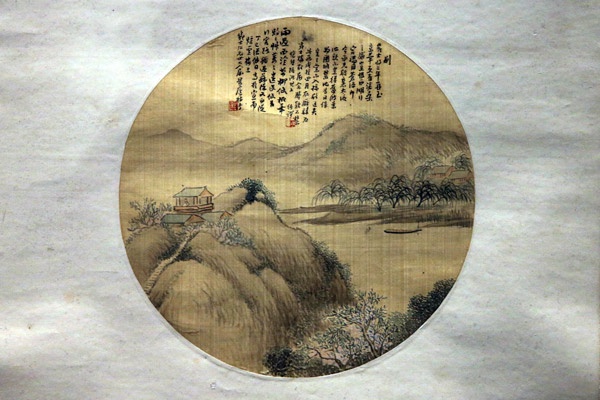
Yan Fu is remembered as a pioneering scholar and translator, who introduced Western ideas to China. A new exhibition focuses on his lesser-known attributes.
It's no exaggeration to say his biography is a reflection of China's painstaking struggle to modernize in an age of turmoil.
Yan Fu (1854-1921), a native of eastern Fujian province, is remembered by many Chinese as a pioneering scholar and translator who advocated for social reforms and introduced Western ideas to China in the late Qing Dynasty (1644-1911).
But a new exhibition in the Palace Museum in Beijing, also known as the Forbidden City, showcases more facets of this key figure in recent Chinese history.
The Calligraphic Art of Yan Fu features more than 100 of his handwritten works, such as copies of calligraphy, letters, annotations, couplets and inscriptions for friends and acquaintances.
"These calligraphic works represent his spiritual treasure," says Shan Jixiang, director of the Palace Museum, at the opening ceremony of the exhibition on Dec 28.
Some exhibits are of Yan's copies of famous calligraphers' works, including the iconic Lanting Xu by Wang Xizhi and pieces from masters like Chu Suiliang and Yan Zhenqing.
Commenting on his works, Zhang Jiazhuang, a professor at Fujian Normal University and a calligraphy critic, says: "His achievements in calligraphy are often overwhelmed by his great reputation as an enlightening thinker.
"His calligraphy style is rooted in Yan Zhenqing's style and also mixed other ancient icons.
"And considering his historical background, his calligraphy looks like an elegant gentleman standing out from a chaotic society. It reveals his strong character."
But his handwritten letters to other key historical figures are more useful for academic studies.
At the exhibition, there are even displays of Yan's English letters, which were written to his student, renowned translator Wu Guangjian.
Both of them once studied at the Royal Naval College in Greenwich in the United Kingdom.
In the aftermath of the First Sino-Japanese War (1894-95), when China was defeated and faced a deep social crisis, Yan translated many important Western writings into Chinese, including Thomas Huxley's Evolution and Ethics, Adam Smith's The Wealth of Nations and John Stuart Mill's On Liberty.
The ideas of "natural selection" and "survival of the fittest" were introduced to Chinese readers through his translated works.
The ongoing exhibition in the Palace Museum also features copies of these translated books.
In the preface of the Chinese edition of Evolution and Ethics, Yan mentions three goals of translation-"faithfulness, expressiveness and elegance"-which are still considered as the major principles in Chinese translation theory.
Shan says that the exhibition is in the Palace of Prolonging Happiness in the museum to go with Yan's crossover between East and West.
The unfinished aquarium in the courtyard of this palace is the only remaining Western-style structure in the Forbidden City built during imperial years. Construction of the aquarium was halted after the Chinese monarchy ended in early 1912.
"Yan was also a great educator," says Shan. "He promoted education reform and nurtured a large number of talented people to serve the country."
Yan was one of the founders of Fudan University in Shanghai and the first president of Peking University, when the college changed its name to its current one following the fall of the Qing Dynasty.
If you go
8:30 am-4:30 pm, through Jan 28, closed on Mondays. Palace of Prolonging Happiness (Yanxi Gong) in the eastern wing of the Palace Museum. 4 Jingshan Qianjie, Dongcheng district, Beijing. Online reservations of tickets for the museum are necessary and available at www.dpm.org.cn.



